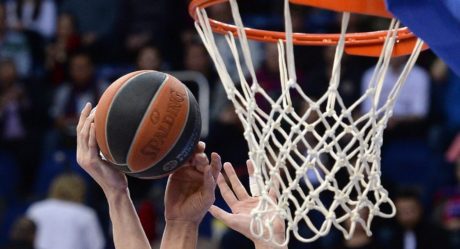If you come to study in the U.S., you’ll find that this is the time of year when many college students — and Americans from all walks of life — become obsessed with March Madness, the National Collegiate Athletic Association (NCAA) Division I Basketball Championship. It lasts from mid-March to early April.
Internet speeds slow during March Madness because so many people are watching games online. Advertising revenues for televised games were $1.24 billion in 2016, the most recent data available.
The answers to the following questions will help you make sense of this peculiarly American event. And next year, if you’re on a U.S. campus, you just might be screaming yourself hoarse cheering for your team.
Why is it so popular?
People in the U.S. are incredibly loyal to their colleges and universities. Whether someone started at a school two months ago or graduated 30 years ago, a fan with that connection is likely to think his or her school’s team is the best and deserves to win it all.
And it’s exciting. Compared to professional basketball, college playoff games are fewer, the stakes are higher, and they take place over a much shorter period of time. So even if a fan’s team doesn’t make the tournament, he or she will watch. Viewers are drawn to the fact that college players aren’t playing for money like professional athletes, but for their schools and for the love of the game.
Who gets to play?
More than 300 college teams play in NCAA Division 1. On “Selection Sunday” — March 11 this year — a committee announces the 68 teams that will compete in the men’s bracket, a tree diagram of the tournament games. (Eight teams play in preliminary matches for four slots in the final 64.) Another committee announces the 64 teams that will compete in the women’s bracket.
In each case, 32 teams are chosen because they have won their respective conference championships. (A conference is a roughly geographic grouping of colleges.) The selection committee chooses the remaining teams based on their season records and the difficulty of their schedules, then divides the teams into four regions.
The top teams in each region are given the rank of “first seed,” the next four “second seed,” and so on. In the first round of the tournament, a first-seed team plays a 16th-seed team and a second-seed team plays a 15th-seed team. In other words, the best teams play the weakest teams. Teams in the middle will be more evenly matched during the early games of the tournament.
Who’s likely to win?
This is the second part of why March Madness is so popular: Even experts find it hard to predict who will win.
Two of this spring’s top-ranked men’s teams — the University of Kansas and Villanova University — are familiar contenders with winning basketball histories. The University of Virginia and Xavier University are top seeds without recent March Madness victories. But part of the thrill of March Madness is the emergence of the Cinderellas, underdog teams with little history of basketball dominance who win against teams that fans considered invincible.
A few years ago, the men’s team from Florida Gulf Coast University — only a decade old and seeded 15th in its region — advanced to play among the last 16 teams in the tournament by beating second-seed Georgetown University. This year, men’s teams such as the South Dakota State Jackrabbits, the Loyola University Chicago Ramblers and the Davidson College Wildcats are underdogs, teams that might just do well in March Madness and be called “bracket busters.”
For the women’s tournament, the top four seeds are the University of Connecticut Huskies, the University of Notre Dame Fighting Irish, Mississippi State Bulldogs and the University of Louisville Cardinals. Popular underdogs include the University of Maine Black Bears, the Belmont University Bruins and the Quinnipiac University Bobcats.
Follow ShareAmerica for information about planning for and getting the most out of a U.S. education.
Mark Trainer









